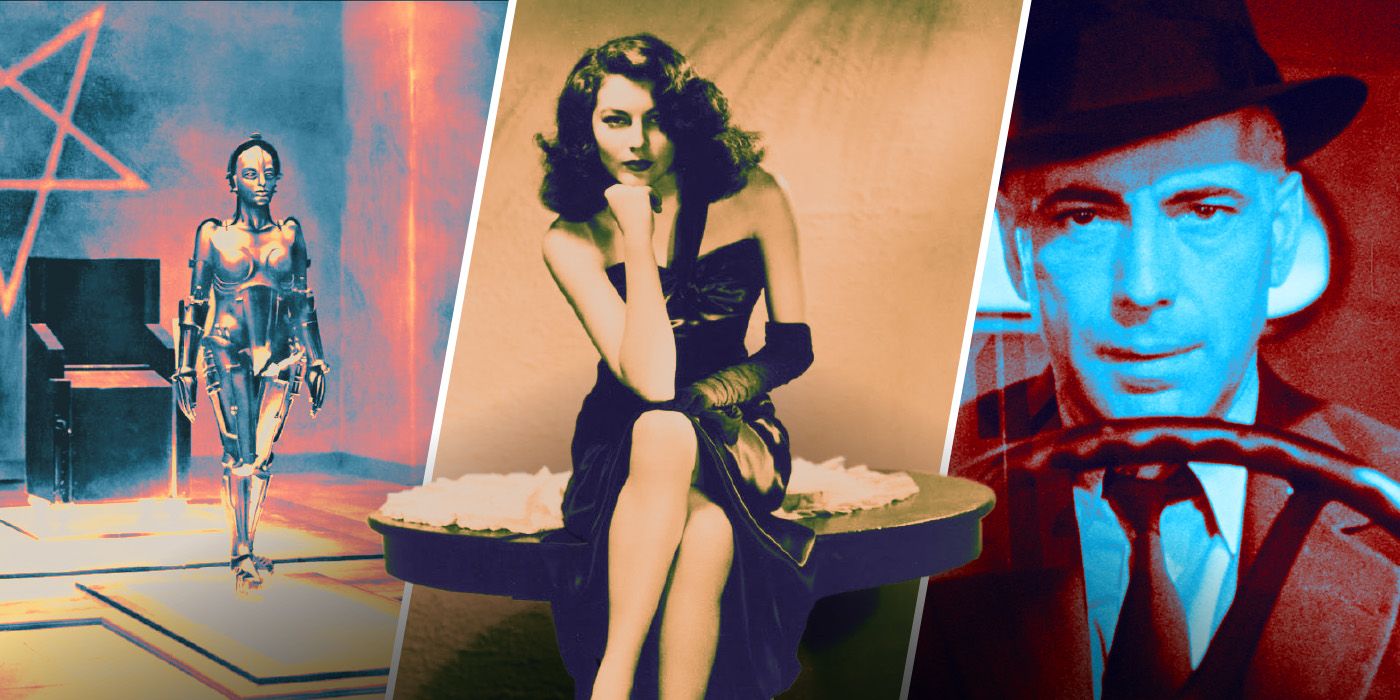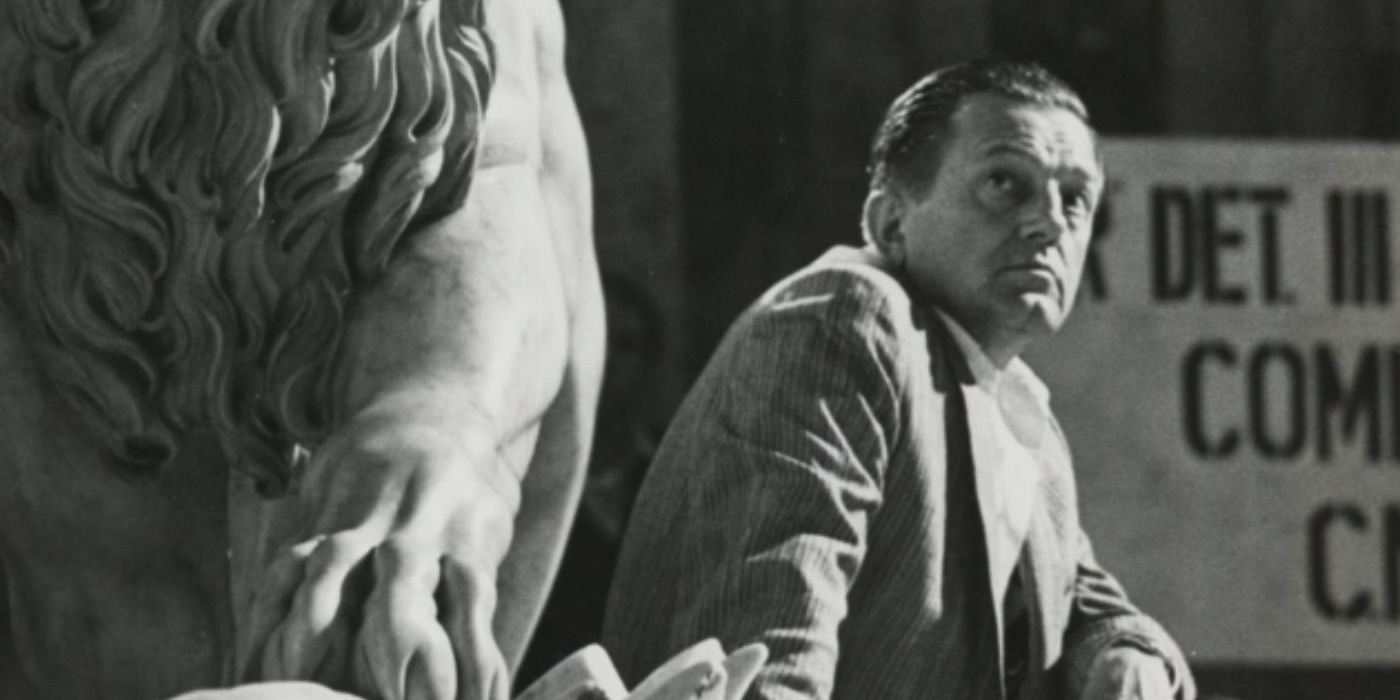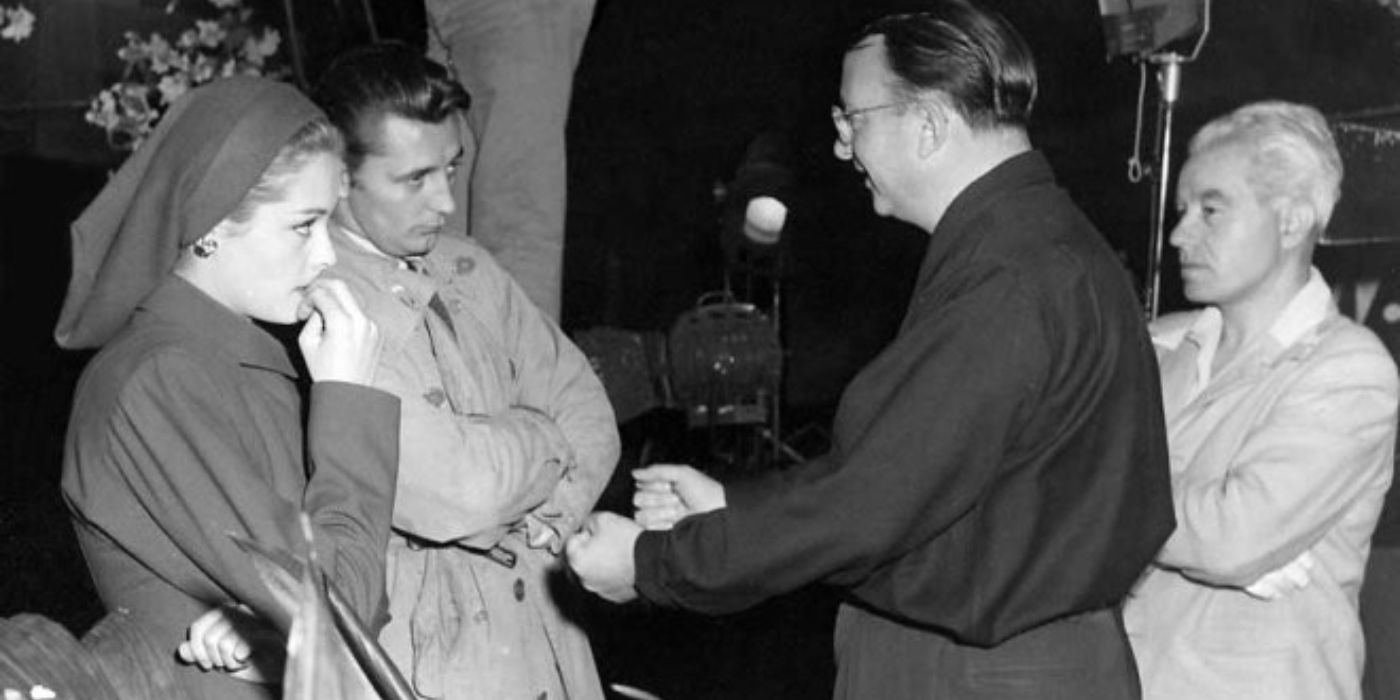Summary
- The Golden Age of Film Noir was born in the midst of societal cynicism and foreboding, characterized by darker themes and subversive characters.
- The discipline of film noir was not only influenced by American studios but also by great foreign directors who revolutionized storytelling.
- The 20 greatest film noir directors of all time include Edward Dmytryk, Jacques Tourneur, Raoul Walsh, Carol Reed, Akira Kurosawa, Ida Lupino, Anthony Mann, and Jules Dassin.
By the 1940s, major film studios (led by Warner Bros.) were caught up in the midst of a unique clash of technology with cultural impact. The arrival of sound in film, the rise of German expressionism (first started in the '20s), and the race for vertical integration saw studios clamoring to own and operate the largest theaters, opening the door for the B-movie studio system to grow.
It was in that artistic incubator between the Great Depression, World War II, and the existential dread of the Holocaust, that a cloud of societal cynicism and foreboding began seeping its way into film. Encompassing darker and more pessimistic themes of fatalism, stories of the criminal underworld, detective thrillers, femme fatales, subversive characters, stylized filming, expressive lighting, and mise-en-scène productions, a new breed of filmmaking was born.
It was dubbed "Film Noir," literally meaning dark or black cinema, and audiences everywhere were enthralled by it. The financial clout of American film studios may have raised its profile, but it was often the great foreign directors who flocked to Hollywood and revolutionized storytelling with their brilliant artistic voices that led to the Golden Age of Film Noir.
The discipline has since gone on to influence some of the most celebrated filmmakers around, with modern movies regularly paying homage to the legends of noir. In honor of those greats, whose mastery of noir has left an indelible mark on cinematic history, here are the 20 greatest film noir directors of all time.
1 Edward Dmytryk (1908 – 1999)
One of the infamous "Hollywood Ten," Edward Dmytryk was the son of Ukrainian immigrant parents, and grew up in San Francisco. Losing his mother at a young age, his father's abusive ways led Edward to run away from home, until juvenile authorities allowed him to live alone when he turned 15. He would later find work as a film editor, rejecting a chance to study at the California Institute of Technology on a scholarship in favor of being a filmmaker.
Career, Interrupted
Earning Best Director and Best Picture Academy Award nominations for his films Crossfire (1948) and The Caine Mutiny (1955), Dmytryk was known to be exceptional at dark psychological tropes, complex characters, and seedy worlds defined by morally questionable actions.
His visual style was also immersive and gritty, and despite Dmytryk's brilliance and contributions to film noir, his devout leftist leanings saw him jailed by the infamous House Un-American Activities Committee, something his career never fully recovered from.
2 Jacques Tourneur (1904 – 1977)
A French-American filmmaker who came to prominence during the Golden Age, Jacques Tourneur was known for a range of styles that featured many famous horror and atmospheric suspense films among them. Tourneur was brilliant at emotive story telling and expressive camera techniques, and while he wasn't actually known for film noir as a specialist style, it's impossible to separate him from the discipline, since he gave the world what is often considered one of the greatest film noirs ever made.
An All-Time Great
Out of the Past was a masterpiece of film noir, and a movie that fans and cinema students regularly cite as the best of its kind. Starring an imperious Robert Mitchum and a dazzling Jane Greer, the film subverted morality and expectations at every turn, with a fatalistic style around Greer's character Kathie, a femme fatale who pulls the men she encounters into her orbit. A scintillating production, it was film noir perfected.
3 Raoul Walsh (1887 – 1980)
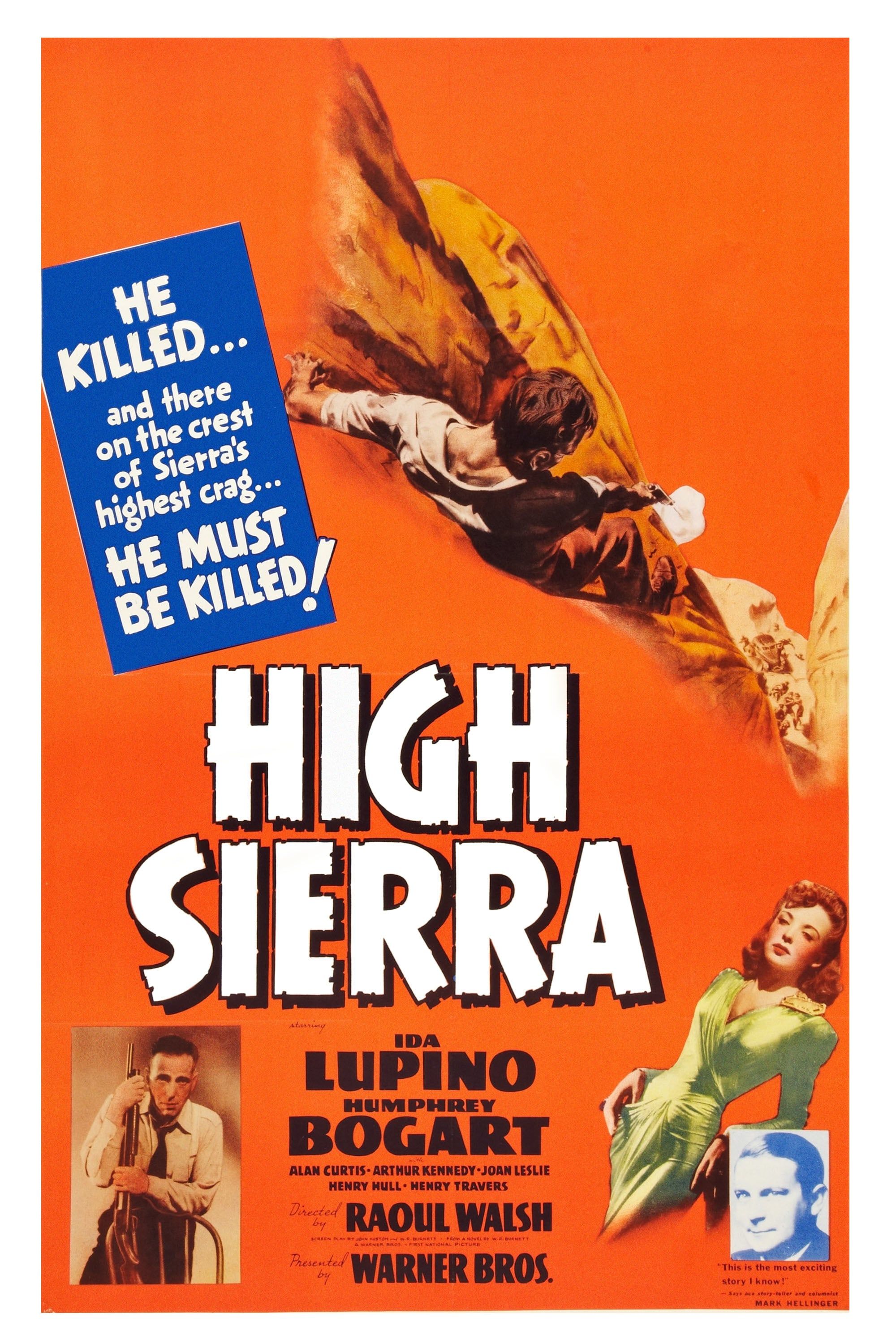
High Sierra
- Release Date
- January 23, 1941
- Director
- Raoul Walsh
- Cast
- Ida Lupino , Humphrey Bogart , Alan Curtis , Arthur Kennedy , Joan Leslie , Henry Hull
- Runtime
- 100
- Main Genre
- Crime
Both a director and an actor, Raoul Walsh is a Hollywood legend. His directorial career alone spanned more than five decades, and he directly or indirectly worked on over 200 films in that time. Walsh often worked with the biggest names around, including John Wayne, Marilyn Monroe, and Rita Hayworth.
Walsh also worked with iconic actors like Humphrey Bogart and Errol Flynn on multiple occasions. By the '20s, he was already showing a proclivity for subversive characters and themes that fearlessly explored things like sexuality, desire, sex work, and promiscuity at a time when such topics were heavily taboo.
Unapologetic and Bold as a Filmmaker
Among his other stand out pictures was They Drive by Night (1941), a film starring Humphrey Bogart that explored the cutthroat world of long-haul trucking, told through a story of brothers who allow a femme fatale to come between them. A year later, Walsh made High Sierra (1941), a film that cemented Bogart's reputation as an icon of film noir, as it tackled the seedy underbelly of crime and dark psychology.
4 Carol Reed (1906 – 1976)
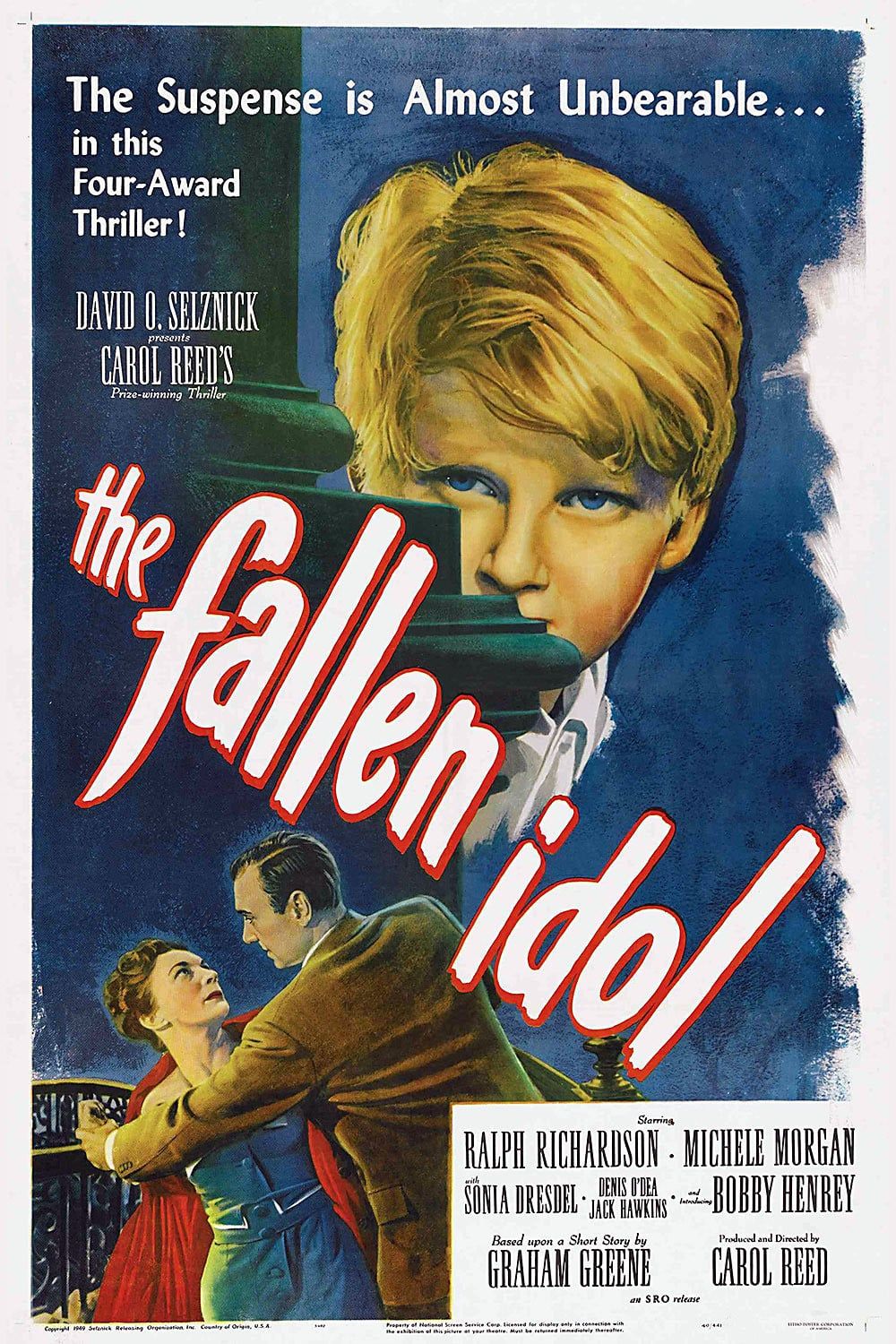
The Fallen Idol
- Release Date
- September 30, 1948
- Director
- Carol Reed
- Cast
- Ralph Richardson , Michèle Morgan , Sonia Dresdel , Bobby Henrey , Denis O'Dea , Jack Hawkins
- Runtime
- 95
- Main Genre
- Drama
Best known for films that portrayed suspense and mystery, Carol Reed was a British director who was a master at depicting well-drawn characters whose complexity saw them skirting the edges of human nature.
Between 1947 and 1949, Reed would make three films that could all be considered masterclasses of noir. Among them was Odd Man Out (1947), a brilliant meditation on human nature and a divided Irish society haunted by the IRA.

